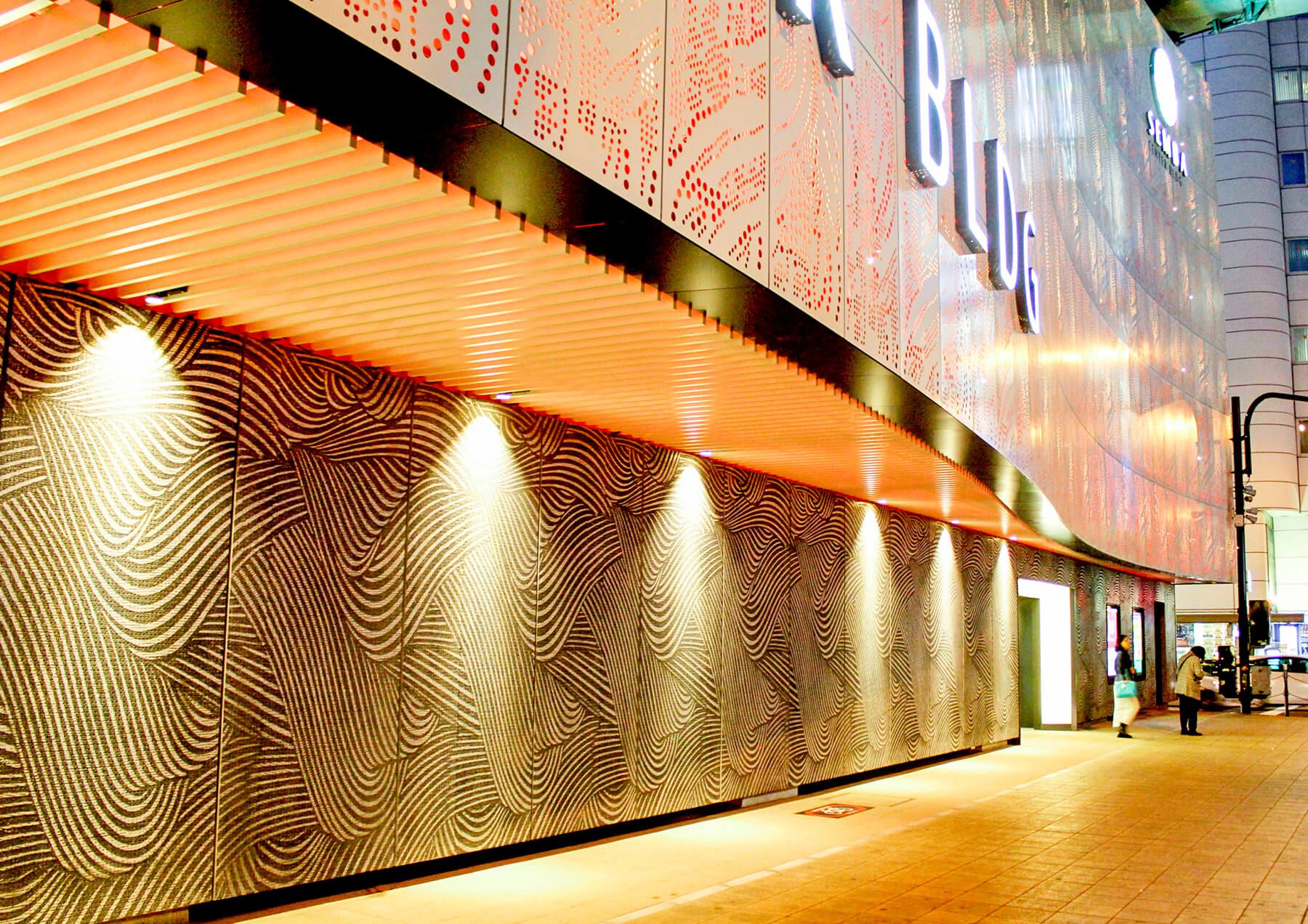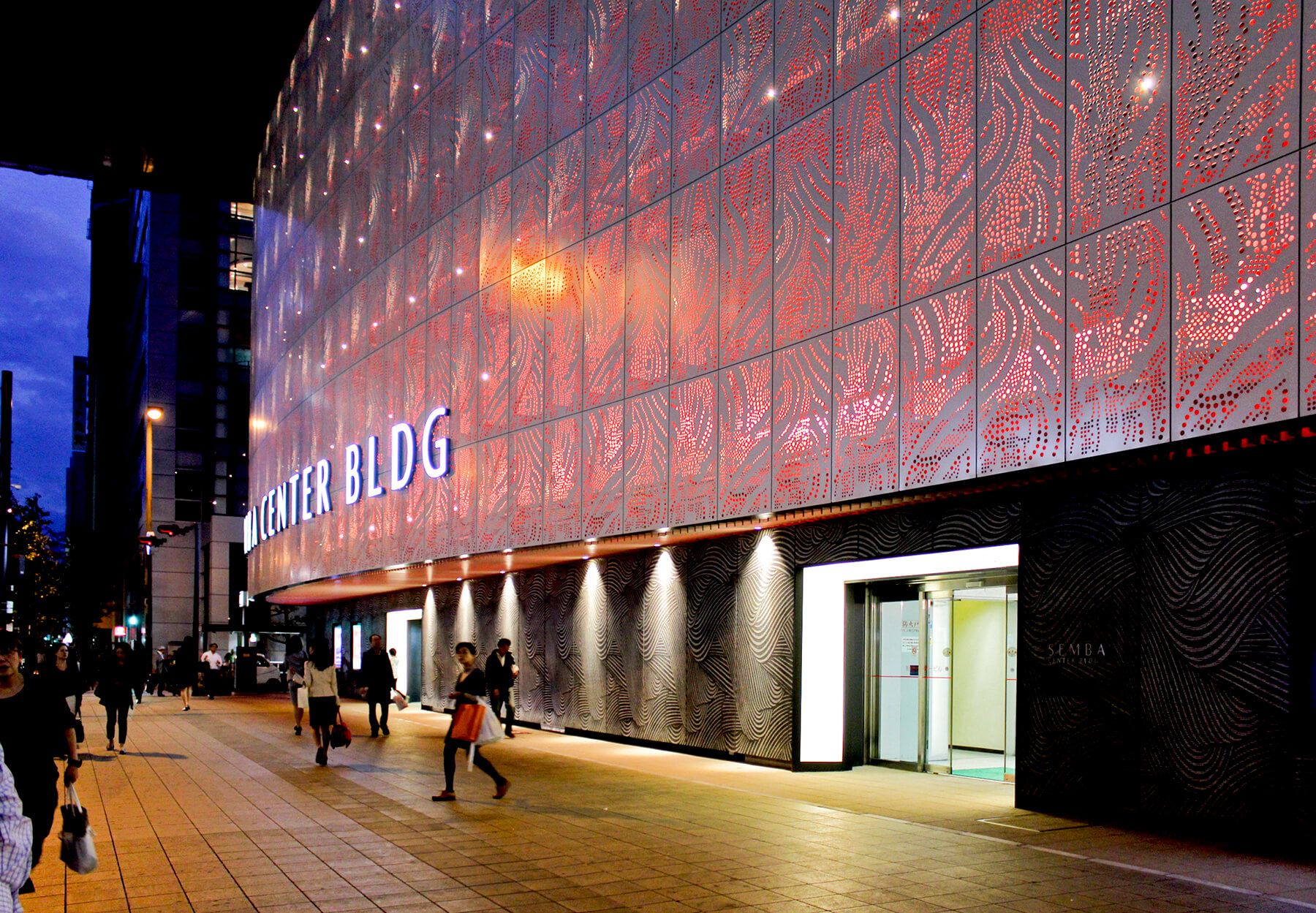“From a designer’s perspective, it has been wonderful to see the look of surprise and delight on the faces of passersby when they notice the new look of the Semba Center Building. Ishimoto’s architects have also told us that the textile merchants themselves are very happy with the end result, and some of the construction workers have even asked them for their autographs,” Naamanka says with a smile.
A Kimono pattern rejuvenates the Semba Center Building in Osaka
BY GRAPHIC CONCRETE
26.11.2014

Just a couple of years ago the Semba Center Building in Osaka, Japan, was an unsightly bazaar-like complex of ten buildings housing textile companies in the city centre, dividing Osaka in two. Originally built in the 17th century, and now partially located beneath a motorway flyover, the Semba Center Building had reached such an age that the officials demanded its renovation to reinforce its brick façade against the possibility of earthquakes and to prevent the bricks from cracking and falling.
Ishimoto Architectural & Engineering Firm, Inc was selected to carry out the project. The architects at Ishimoto were assigned the task of rejuvenating the urban image while at the same time highlighting the textile activities that take place within the Semba Center Building. This inspired the poetic idea of somehow incorporating a traditional Kimono pattern.
Selecting the materials and agreeing to the renovation solution proved to be a lengthy process due to the variety of opinions and concerns of the merchants’ association representing the 800 tenants. Fortuitously, the fibre concrete manufacturer AGB presented the graphic concrete technique to Ishimoto’s architects just at the right time, shortly before the chief architect Mr. Tada’s private visit to Finland.
Mr. Tada was very interested in the technology, so AGB and Graphic Concrete’s distributor in Japan arranged for Samuli Naamanka, founder of Graphic Concrete, to show Mr. Tada examples of how graphic concrete has been used in Finland. It only took one day with Samuli Naamanka to convince Mr. Tada that graphic concrete was the right choice for the new facade of the Semba Center Building.
Ishimoto’s architects designed their own sketch of a Kimono pattern, but for the final version they wanted a more artistic touch. Following the visit of Mr. Tada to Finland, it seemed natural to ask Samuli Naamanka to design the final pattern.

“The assignment of designing the Kimono pattern was an extremely interesting challenge, as the kimono is a very traditional Japanese form of clothing. In my subsequent research I learned a lot about kimonos and their different varieties, such as Nami and Asanoha kimonos. I found out that each designer creates his or her own variation on the theme and that there is no one standard design,” says Samuli Naamanka.
Originally the plan was to create a different design for each of the ten buildings at the Semba Center Building. To reduce costs, seven patterns were eventually chosen. The patterns were created using graphic concrete and perforated aluminium panels.

“Combining the two materials supports both techniques and allows the patterns to be repeated and varied in an interesting way. The first three patterns have already been completed and can be seen on the façade of the Semba Center Building, while the remaining patterns will be completed by the end of next summer,” Naamanka adds.
Naamanka enjoyed extremely smooth collaboration with Ishimoto Architectural & Engineering Firm, Inc, and all the details of the project plan have been very successful. The biggest obstacle to the implementation of the project has been the central location of the Semba Center Building, due to which the construction work has had to take place partially at night.
